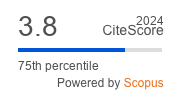Review | Open Access
The Potential of AI in Information Provision in Energy-Efficient Renovations: A Narrative Review of Literature
| Views: | 2163 | | | Downloads: | 1292 |
Abstract: Energy-efficient renovation (EER) is a complex process essential for reducing emissions in the built environment. This research identifies homeowners as the main decision-makers, whereas intermediaries and social interactions between peers are highly influential in home renovations. It investigates information and communication barriers encountered during the initial phases of EERs. The study reviews AI tools developed within the EERs domain to assess their capabilities in overcoming these barriers and identifies areas needing improvement. This research examines stakeholders, barriers, and the AI tools in the literature for EERs. The discussion compares the functionalities of these tools against stakeholder needs and the challenges they face. Findings show that tools often overlook methodologies in human–computer interaction and the potential of textual and visual AI methods. Digital tool development also lacks insights from social science and user feedback, potentially limiting the practical impact of these innovations. This article contributes to the EERs literature by proposing an AI-supported framework and outlining potential research areas for future exploration, particularly improving tool effectiveness and stakeholder engagement to scale up the EER practice.
Keywords: AI; energy-efficient renovations; information and communication barriers; stakeholders
Supplementary Files:
Published:
© C. Koray Bingöl, Tong Wang, Aksel Ersoy, Ellen van Bueren. This is an open access article distributed under the terms of the Creative Commons Attribution 4.0 license (http://creativecommons.org/licenses/by/4.0), which permits any use, distribution, and reproduction of the work without further permission provided the original author(s) and source are credited.


